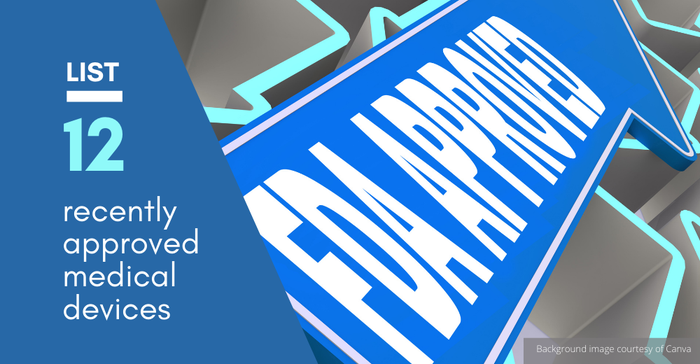FDA has recently approved these 12 medical devices and diagnostic products to be marketed in the United States.
Amanda Pedersen
April 19, 2021
12 Slides

The products in this list include 12 of the most recently-approved medical devices. Additional information can be found on FDA's website, however the agency notes that the lists on that page do not include all the new medical devices that have been cleared or approved for sale in the United States.
About the Author(s)
Sign up for the QMED & MD+DI Daily newsletter.
You May Also Like




